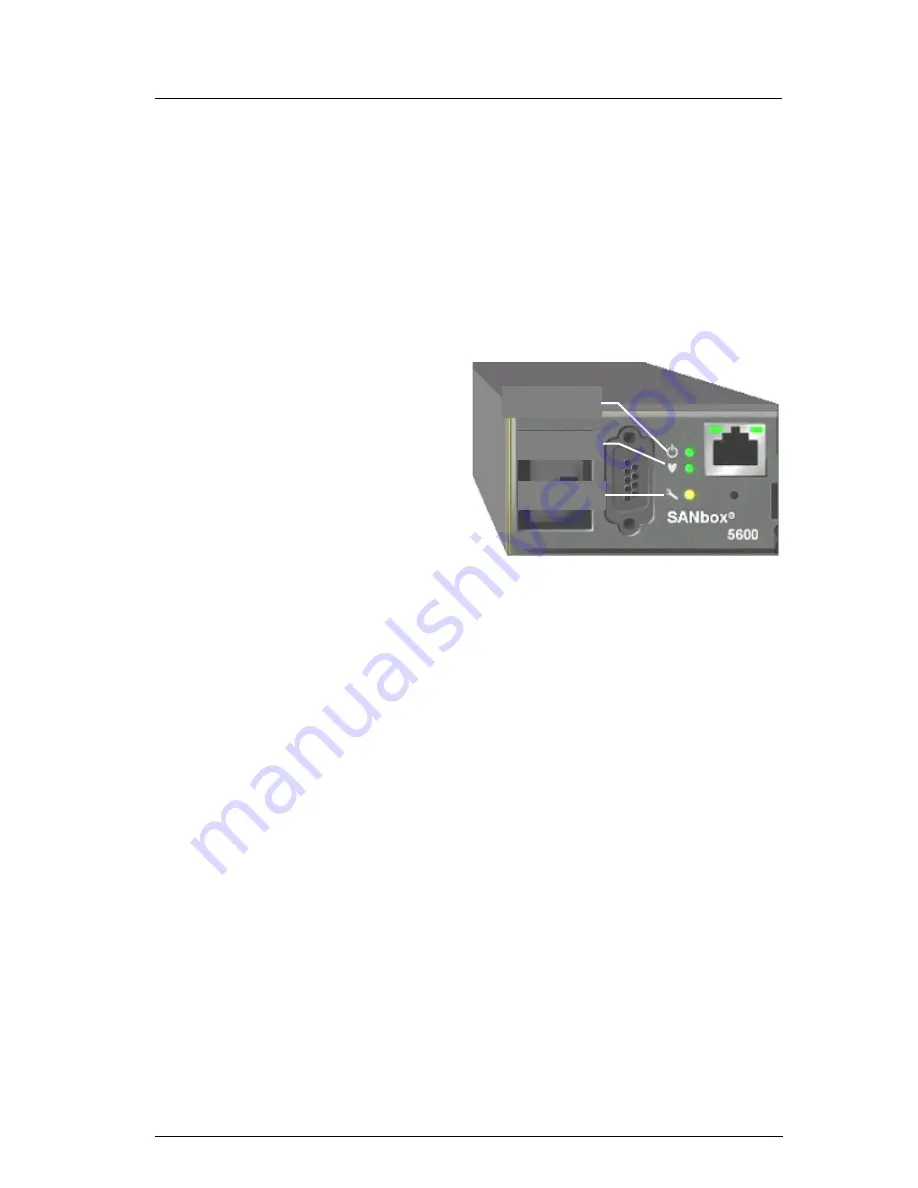
3
Step 4. Install Transceivers
An SFP transceiver is required for each switch port that will be connected to a device or another switch. The SANbox
5200 series switches support 1-Gbps and 2-Gbps transmission. The SANbox 5600 series switches support 1-Gbps,
2-Gbps, and 4-Gbps transmission.
❑
To install an SFP transceiver, insert the transceiver into the switch port and gently press until it snaps in place. The
transceiver will fit only one way. If the transceiver does not install under gentle pressure, flip it over and try again.
Step 5. Apply Power to the Switch
❑
Attach the AC power cord(s) to the switch and wall
outlet or power strip. Verify that the Input Power LED
is illuminated.
❑
The switch runs its self tests and begins normal
operation – this may take a few minutes. Verify that
the Heartbeat LED is blinking (once per second) and
the System Fault LED is NOT illuminated.
Step 6. Verify Workstation Requirements
❑
Verify that your workstation can support the QuickTools™ application with the following minimum requirements:
❑
Windows® 2003 SP1/SP2/R2 and XP
❑
256 MB memory minimum; 512 MB recommended
❑
1 GHz processor
❑
Video card with 256 colors
❑
CD ROM drive, RJ-45 Ethernet port
❑
Internet Browser: Microsoft® Internet Explorer® 5.0, Netscape Navigator® 6.0, Firefox 1.0, or Mozilla™ 1.5
❑
Java® 2 Standard Edition Runtime Environment 1.4.2
❑
The default IP address of a new switch is 10.0.0.1. Ensure that your workstation is configured to communicate
with the 10.0.0 subnet.
Step 7. Connect the Workstation to the Switch
❑
Connect the workstation to the switch using an Ethernet crossover cable, switch, or hub. If you are using a Windows
workstation, you must have a live Ethernet connection when the workstation powers up.
INPUT POWER
LED
HEARTBEAT
LED
SYSTEM
FAULT LED








